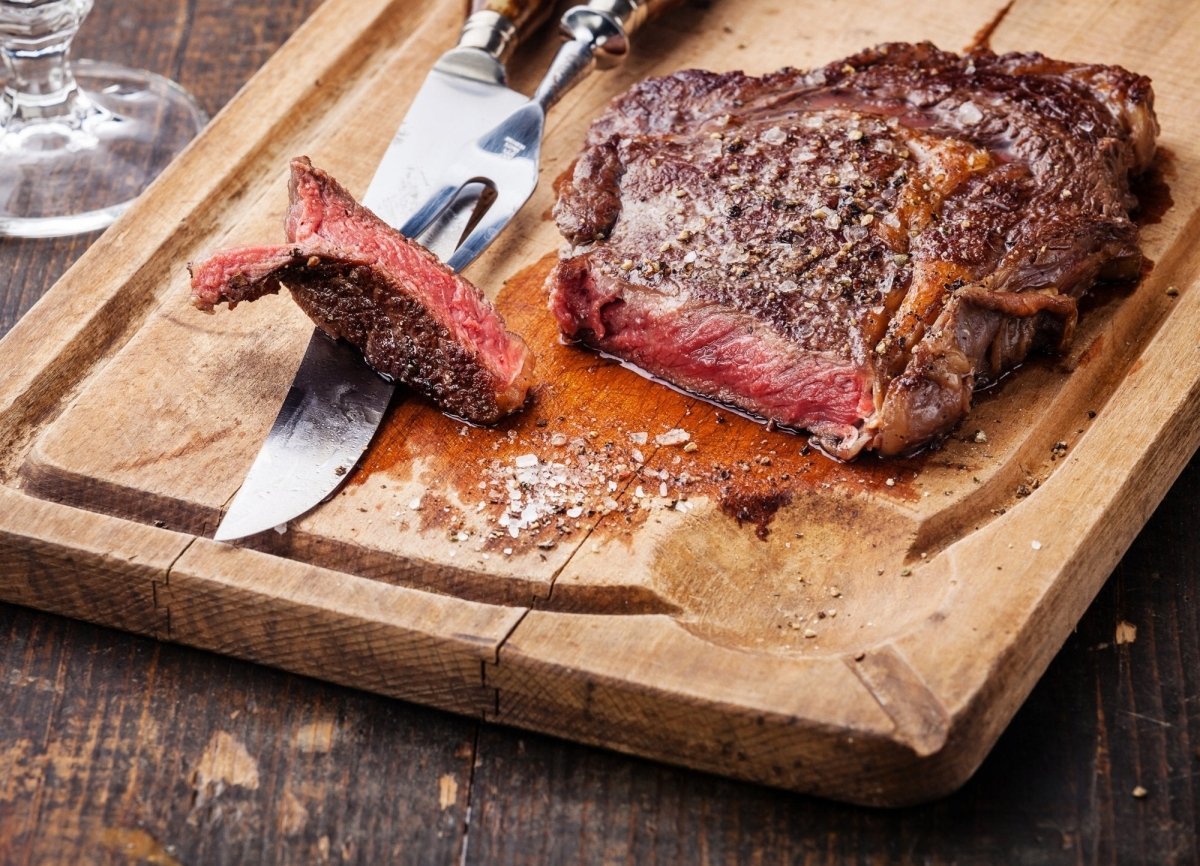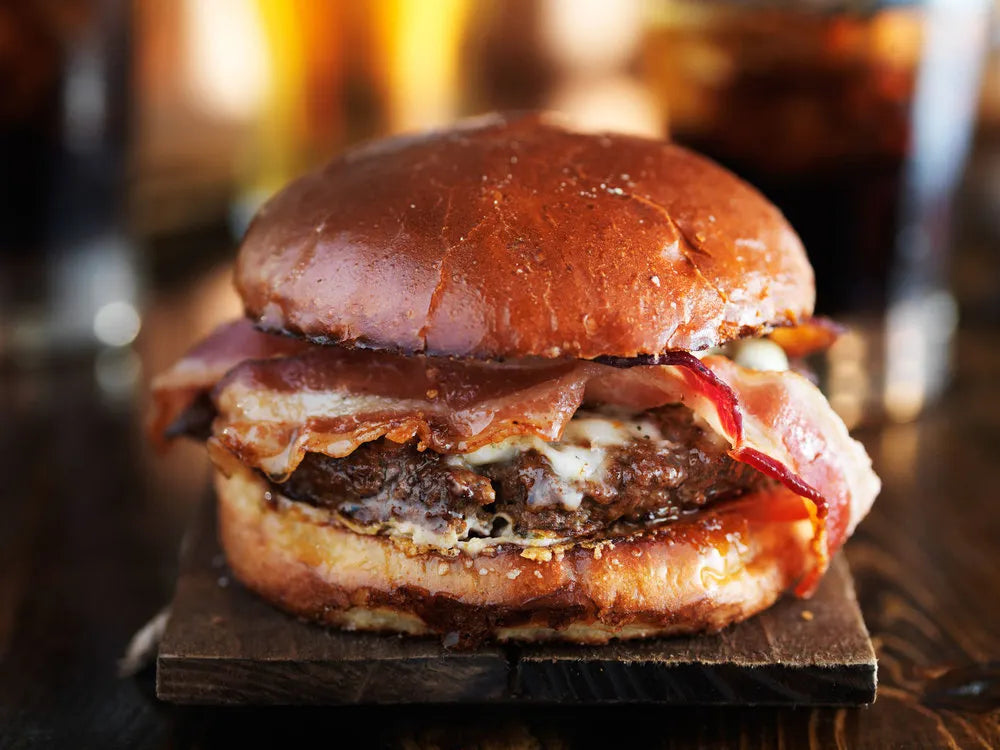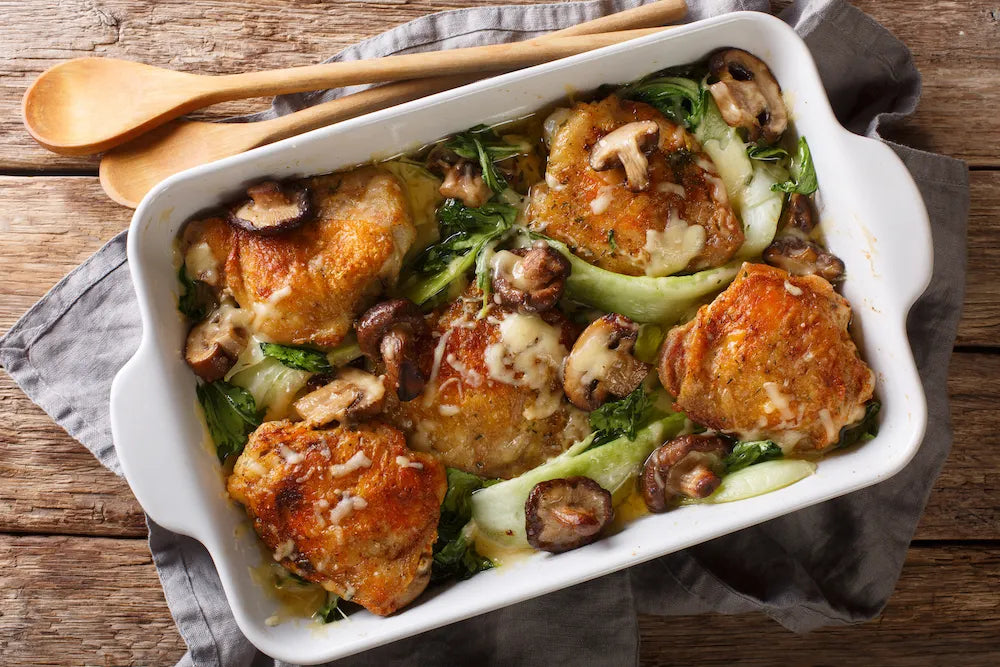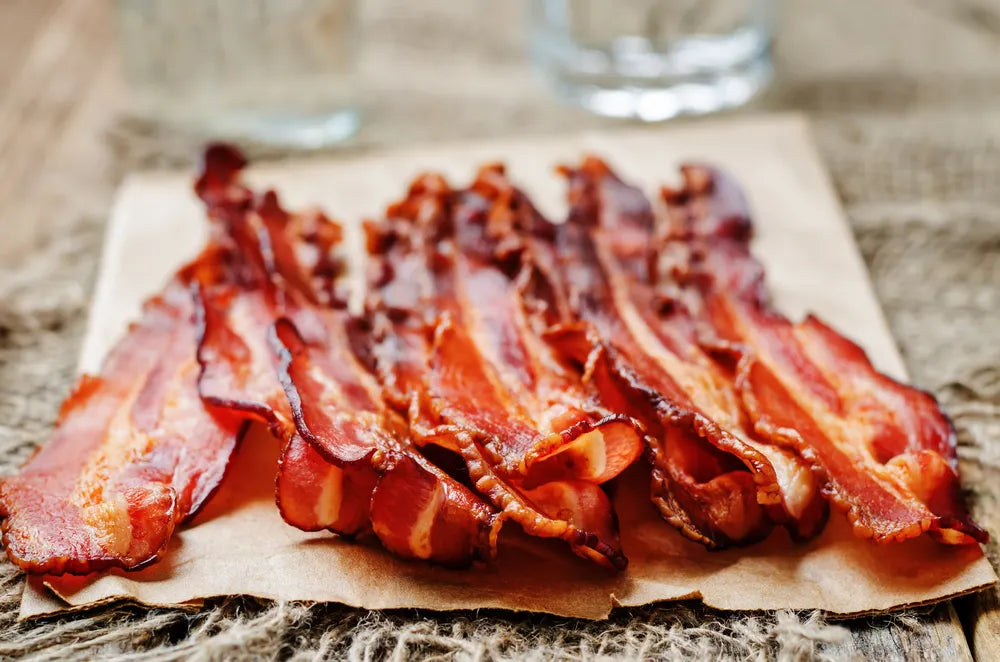My top 10 tips for cooking a perfect steak
I raise beef cattle on my farm in Maine, so I know firsthand how much care goes into producing a great steak. But here’s something a lot of people don’t realize: even the best beef in the world can be ruined in the kitchen. The way you cook a steak matters just as much as how the animal was raised.
I’ve cooked thousands of steaks over the years—sometimes three or four a week—and I’ve made just about every mistake you can make. So I put together this list of 10 simple, no-nonsense tips to help you cook the perfect steak, every time.
Perhaps the biggest factor in cooking a steak is to start with great meat. There's nothing you can do to make a bad, flavorless steak palatable. The whole point is to bring out the unique, delicious essence of the meat. If you buy bad meat, you might as well buy a jar of A-1 Steak Sauce to go with it.
So - assuming you're starting with some delicious straight-from-the-farm grass-fed steaks - here are my Top 10 tips:
1. Defrost your steak (in less than an hour)
I’m not a great planner, so there are plenty of nights I’m in the mood for steak but the only steaks in the house are in the freezer. Not a problem. I fill a bowl of water (not warm) and place it on the counter and put the frozen steak (in its package) in the water for an hour. Sometimes I’ll change the water halfway through - and 60 minutes later my steak (or ground beef, or chicken breast) is thawed. Tip: There can be small holes in the cryovac plastic wrap so inspect your meat package before placing it in the bowl of water.
Never defrost your steak in the microwave or on the kitchen counter - for food safety reasons.
2. Don’t cook a cold steak
To ensure the steaks cook evenly, it’s important to let your steak come to room temperature before cooking it (if you have time). You don’t need to wait until the meat is exactly 72 degrees. And you certainly don’t need to take its internal temperature with a meat thermometer. I usually try to leave my steaks out for an hour or so before cooking.
3. Pat your steaks dry before cooking
Before placing your meat on the grill or in a pan, pat them dry using paper towels. This is particularly important if the meat is seeping a bit of blood. One method I use is to place a stack of paper towels under the steak and another stack on top. Press down gently and pat down the sides of the meat.
Drying the meat with a paper towel just before cooking will ensure good contact between the steak and the pan. If it’s not dry it won’t get crispy on the outside.
4. Don’t over-season your steak
I’ll admit it right off - the only seasoning I use on my steaks is salt. Salting is a crucial part of the seasoning process. Salt releases moisture in the muscle of the meat and releases the natural flavors of steak. I season my steaks with kosher salt just as I put them in the pan - but some chefs suggest adding the salt right after you take the meat out of the refrigerator. I don’t think that matters a whole lot - but whatever you do, don’t wait to season until you’re serving.
Even top steakhouse chefs limit their seasoning to salt, black pepper and, perhaps, garlic. You want to let the wonderful flavor of the steak be the star.
5. Use the right cooking oil
I was doing this one wrong until very recently! I was using olive oil but it was always smoking. I discovered that’s because it has a low smoke point (300 degrees). The best oils for cooking steak are avocado oil, soybean oil, and canola oil - all of them have a high smoke point between 400 and 520 degrees. Another alternative is clarified butter - with a smoke point of 450 degrees.
6. Use the right pan and make sure it is very hot
These days, many steakhouse chains use infrared broilers with their steaks to ensure extremely high temperatures and even heat distribution. Unfortunately, most of us don't have the luxury of such kitchen gear at home. I recommend using cast iron skillets because they hold heat, which ensures the right sear and caramelization. Since cast iron is a dense metal, it also ensures even heat distribution. This, in turn, translates to evenly cooked and browned steak. No matter what, insure your skillet is very hot, but not smoking.
7. Don’t worry about how often you flip your steak
You’ve probably heard that you shouldn’t flip your steak too often. I’ve read up on this and it seems top chefs say not to worry about it - and, in fact, flipping it often might improve the final result (because it will cook more evenly through the center).
8. Don’t overcook your steak
My daughter recently told me she was nervous about cooking some Ribeyes and I reassured her there was only one really bad thing she could do - she could overcook it.
It can be tricky - This is because how fast your steak cooks depends on the thickness of the cut and the temperature of the grill or skillet. Sure, you can cut into the steak to check whether it's ready but I don’t recommend doing that since it lets out the juices.
I use a meat thermometer - always. Available in either digital or analog versions, meat thermometers are inserted into the center of the meat to gauge its internal temperature. In the case of a medium-rare steak, this should be around 125-130 degrees Fahrenheit. However, because the steak will continue to cook on the plate, it should be removed from the source of heat when it's 5 degrees Fahrenheit lower than the desired temperature.
9. Let the steak rest before serving
When you prepare a steak on a scorching hot skillet or grill, you're forming a crust that locks in moisture. If you cut into your steak right after it's removed from heat, you risk losing all these wonderful juices. Thin steaks should rest between five and seven minutes, while thicker cuts of meat should sit out on the plate for at least 10 minutes. You can even use a meat thermometer to check if your steak is sufficiently rested. No matter how thin or thick the steak, ideally you want its center to cool down to 120 degrees Fahrenheit.
10. Cut against the grain and serve on a warm plate
How you present a steak can have a huge impact not just on its visual appeal but also on its flavor and texture. If you want to cut the meat prior to serving, always cut against the grain or perpendicular to the direction of the muscle fibers. Since muscle fibers can be on the tough side, slicing through them will make the beef more tender. Slicing along the muscle fibers, on the other hand, will have the opposite effect, making the steak chewier.
Another trick to elevating your home dining experience is by warming the plate prior to serving. This is because a warm plate helps to maintain an even temperature of the food while a cold one absorbs its heat, which could translate to a lukewarm steak. One of the best ways to warm your plates is by stacking them in the oven set at a low temperature or by placing them on the stovetop burner.
Enjoy!





10 Comments -
George Cheishvili • -
Demis • -
Chloë • -
Nita • -
Alvin •
1 2 →
Flipping a steak more than once is a mistake, a proper steak requires just one flip, instead cook the first side thoroughly to achieve optimal searing, caramelization, and flavor development. and by the way , thanks for posting this up, it was lovely to read :D
Thanks my friend I will try now
Great tips, thanks!! ..Some I’ve never heard of before (e.g. rest time & how to cut!)!
However, I wouldn’t recommend seed oils.. quite well known nowadays to be pretty toxic! ..As someone just gettin into carnivore diet (for healing, not fot fun!), they recommend, tallow, Ghee or butter (in that order!) 💪😁
Thank you for your help and support today is election day and I plan to cook a healthy great steak
Thx’it’s helpfull